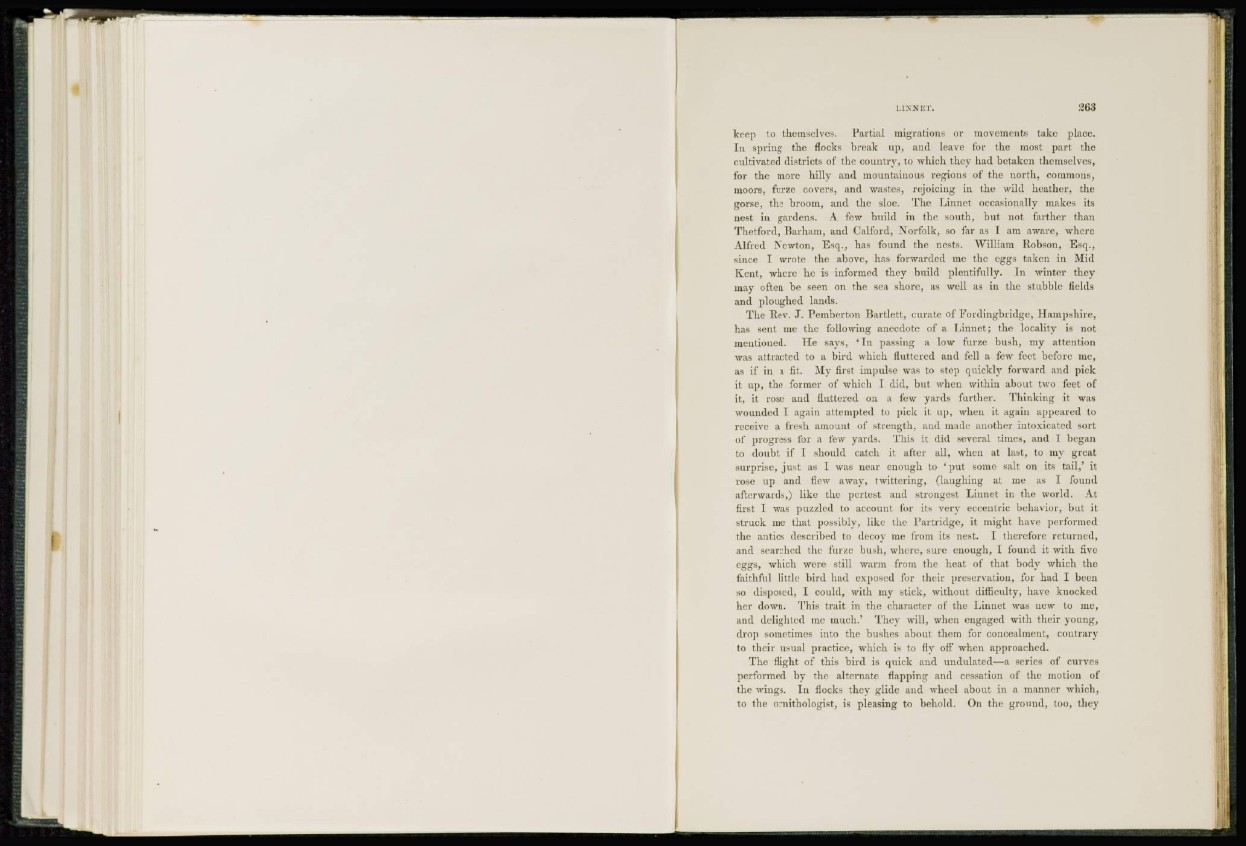
keep to themselves. Partial migrations or movements take place.
In spring the flocks break up, and leave for the most part the
cultivated districts of the country, to which they had betaken themselves,
for the more hilly and mountainous regions of the north, commons,
moors, furze covers, and wastes, rejoicing in the wild heather, the
gorse, the broom, and the sloe. The Linnet occasionally makes its
nest in gardens. A few build in the south, but not farther than
Thetford, Barham, and Calford, Norfolk, so far as I am aware, where
Alfred Newton, Esq., has found the nests. AVilliam Robson, Esq.,
since I wrote the above, has forwarded me the eggs taken in Mid
Kent, where he is informed they build plentifully. In winter they
may often be seen on the sea shore, as well as in the stubble fields
and ploughed lands.
The Rev. J. Pemberton Bartlett, curate of Eordingbridge, Hampshire,
has sent me the following anecdote of a linnet; the locality is not
mentioned. He says, ' In passing a low furze bush, my attention
was attracted to a bird which fluttered and fell a few feet before me,
as if in a fit. My first impulse was to step quickly forward and pick
it up, the former of which 1 did, but when within about two feet of
it, it rose and fluttered on a few yards further. Thinking it was
wounded I again attempted to pick it up, when it again appeared to
receive a fresh amount of strength, and made another intoxicated sort
of progress for a few yards. This it did several times, and I began
to doubt if I should catch it after all, when at last, to my great
surprise, just as I was near enough to 'put some salt on its tail,' it
rose up and flew away, twittering, (laughing at me as I found
afterwards,) like the pcrtest and strongest Linnet in the world. At
first I was puzzled to account for its very eccentric behavior, but it
struck me that possibly, like the Partridge, it might have performed
the antics described to decoy me from its nest. I therefore returned,
and searched the furze bush, where, sure enough, I found it with five
eggs, which were still warm from the heat of that body which the
faithful little bird had exposed for their preservation, for had I been
so disposed, I could, with my stick, without difficulty, have knocked
her down. This trait in the character of the Linnet was new to me,
and delighted me much.' They will, when engaged with their young,
drop sometimes into the bushes about them for concealment, contrary
to their usual practice, which is to fly off when approached.
The flight of this bird is quick and undulated—a series of curves
performed by the alternate flapping and cessation of the motion of
the wings. In flocks they glide and wheel about in a manner which,
to the ornithologist, is pleasing to behold. On the ground, too, they